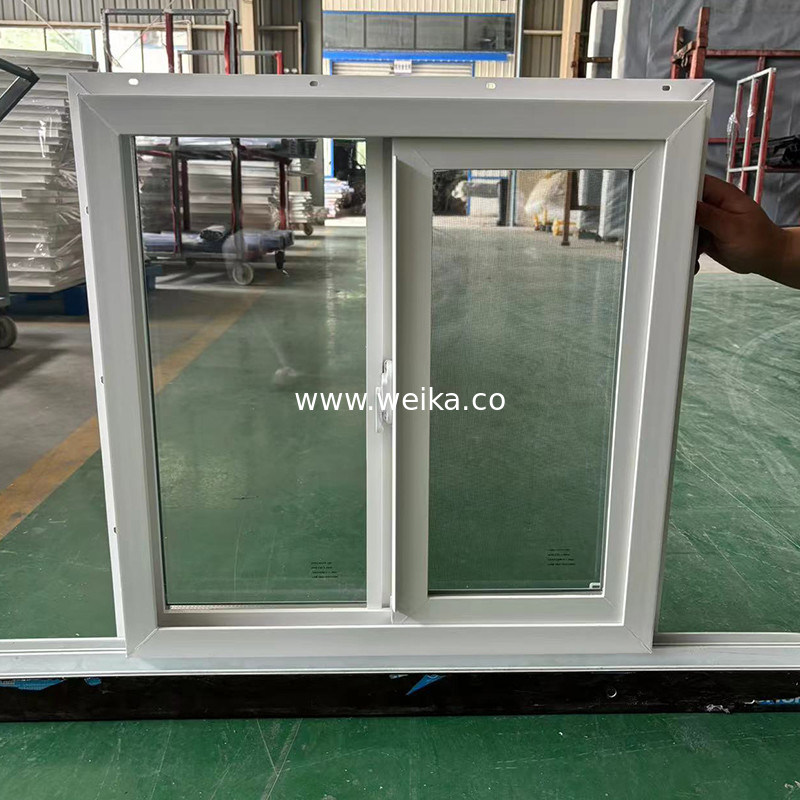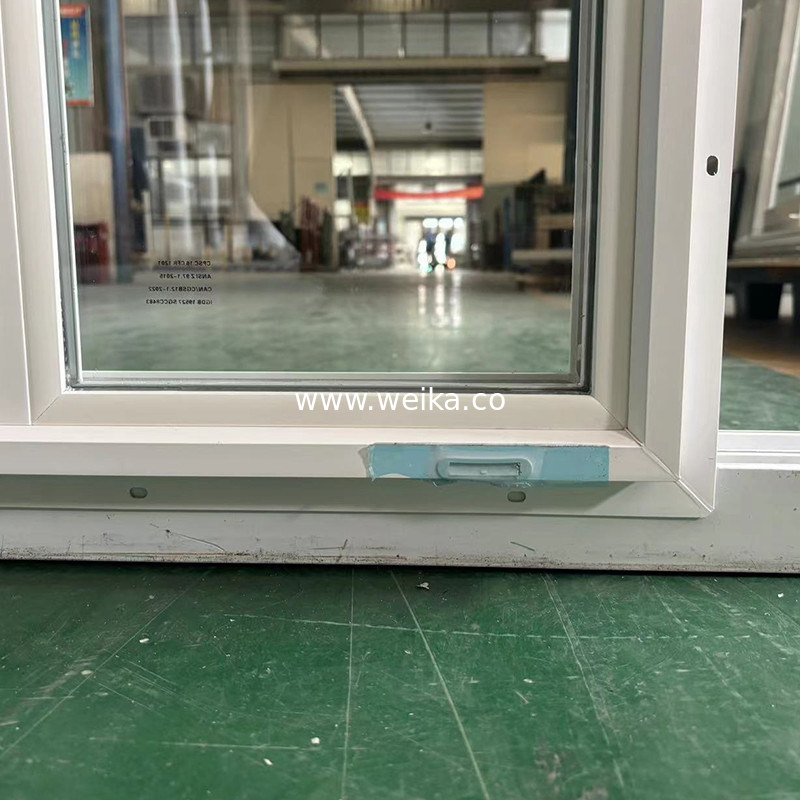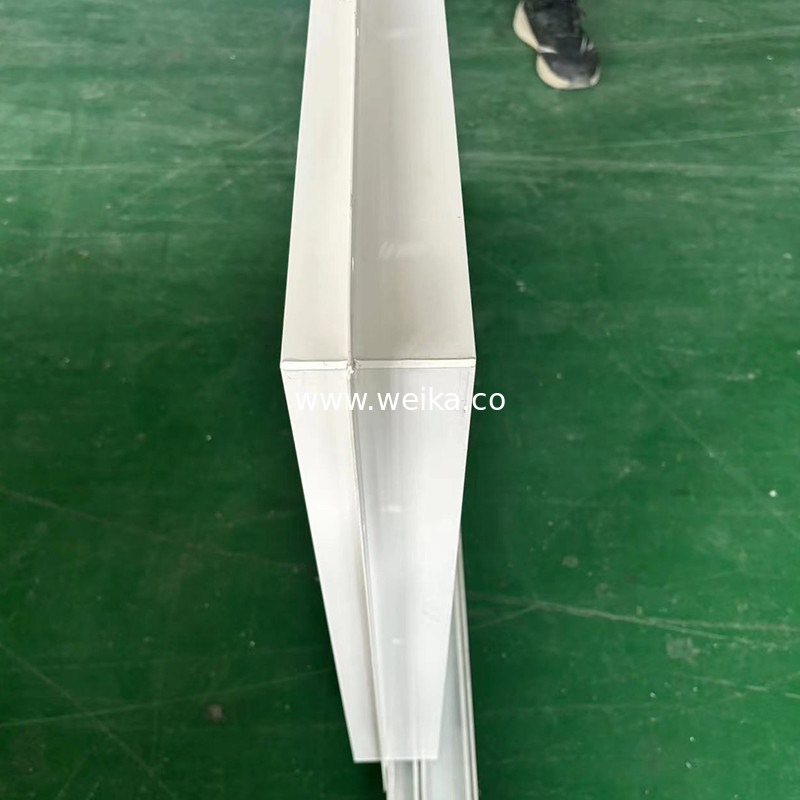|
|
|
Profil
|
Serie
|
Häufig verwendete Serien:
62mm,64mm,78mm,82mm,85mm,87mm,105mm...
|
|
Dicke
|
1,4 mm - 1,8 mm
|
|
Oberflächenbehandlung
|
Extrusionsprofile
Einseitige/doppelseitige Co-Extrusionsprofile
Einseitige/doppelseitige beschichtete Profile
Ganzkörperprofile
|
|
Farbe
|
Kundenspezifisch (üblicherweise Weiß / Schwarz / Apricot...)
|
|
Typ
|
A. Schiebefenster und -tür
|
D. Klappfenster und -tür
|
|
B. Drehfenster und -tür
|
E. Faltfenster und -tür
|
|
C. Hängefenster
|
F. Kipp- und Drehfenster
|
|
Glas
|
Typ
|
Klar / Gehärtet / Getönt / Low-E / Mattiert / Verbundglas
1. Einzelglas
2. Doppel- oder Dreifachverglasung:
3+6+3/3+12+3/3+16+3/5+9+5/5+12+5/5+16+5 / Option für Gitter und Sprossen
3. Benutzerdefiniert
|
|
Dicke
|
Glasdicke: 3,4,5,6,8,10,12
Verbundglasdicke: 0,76, 1,14,1,52
|
|
Beschläge
|
Marke: Deutschland-MarkeChina-Marke
|
Balance + Schließriegel + Wetterleiste + Sieb
Balance + Schließriegel + Begrenzer + Wetterleiste + Kippverschluss + Sieb
|
|
Gitter
|
Edelstahl-SicherheitsgitterFiberglas-Fliegengitter
|
|
Verpackung
|
A. Schrumpffolie + Kartonecke
|
|
B. Holzpalette oder Stahlpalette kundenspezifisches Design / kundenspezifische Größe verfügbar
|

Warum UPVC-Fenster gegenüber Holzfenstern wählen?
Der ultimative Vergleich für moderne Häuser
Seit Jahrzehnten symbolisierten Holzfenster Tradition und Eleganz. Aber in der heutigen Welt mit hohen Energiekosten,
unermüdlicher Wartung und extremen Wetterbedingungen haben sich UPVC-Fenster als die intelligentere, nachhaltigere
Wahl für 90 % der Hausbesitzer herausgestellt. Hier ist der Grund, warum Architekten, Bauherren und umweltbewusste Käufer den
Wechsel vornehmen – und warum Sie es auch tun sollten.
1. Der Wartungskrieg: UPVCs K.o.-Sieg
Holzfenster:
Erfordern Schleifen, Neuanstreichen oder Nachbeizen alle 2–3 Jahre (Kosten: 200–500 $ pro Fenster).
Anfällig für Fäulnis, Termiten und Feuchtigkeitsschäden – insbesondere in feuchten Klimazonen.
Verziehen oder Aufquellen bei extremen Temperaturen verursacht Klemmen und Zugluft.
UPVC-Fenster:
Keine Wartung: Kein Streichen, Versiegeln oder Schleifen. Ein einfaches Abwischen mit Seifenwasser hält sie makellos.
Unempfindlich gegen Fäulnis, Insekten und Feuchtigkeit.
Behalten Form und Funktion in -30 °C Wintern oder 50 °C Sommern.
Realitätscheck: UPVC spart über 20 Jahre 50+ Stunden und 3.000–5.000 $ an Wartungskosten im Vergleich zu Holz.

2. Kosteneffizienz: Langfristige Einsparungen gewinnen
Holzfenster:
Höhere Anschaffungskosten (typischerweise 20–40 % mehr als UPVC).
Wiederkehrende Ausgaben für Reparaturen, Ersatz und Energielecks
.
UPVC-Fenster:
Geringere Anfangsinvestition mit höherem ROI durch Energieeinsparungen.
Mehrkammerprofile und luftdichte Abdichtungen senken die Heiz-/Kühlkosten um 30–40 %.
Durchschnittliche Lebensdauer von über 40 Jahren im Vergleich zu 15–25 Jahren bei Holz (auch bei sorgfältiger Pflege).

3. Ökologische Auswirkungen: UPVC ist umweltfreundlicher, als Sie denken
Mythos: „Holz ist natürlich, also nachhaltiger.“
Wahrheit:
Abholzung: 40 % des geernteten Holzes werden zu Baumaterialien – was zum Verlust von Lebensräumen führt.
CO2-Fußabdruck: Die Behandlung, Versiegelung und der Transport von Holz verbrauchen viel Energie.
Deponieabfälle: Verrottende Holzfenster sind nicht recycelbar.
Nachhaltigkeit von UPVC:
100 % recycelbar: Alte UPVC-Rahmen werden zu neuen Produkten verarbeitet (geschlossener Kreislauf).
Energieeinsparung: Überlegene Isolierung reduziert die CO2-Emissionen zu Hause drastisch.
Langlebigkeit: Weniger Ersatz = weniger Ressourcenverbrauch.
UPVC-Fenster haben 60 % geringere CO2-Emissionen über die Lebensdauer als Holz (BRE Green Guide).

4. Energieeffizienz: UPVC dominiert
Holz dehnt sich bei Feuchtigkeit aus/zieht sich zusammen, wodurch Lücken entstehen, durch die Luft entweicht. Die konstruierte Stabilität von UPVC
liefert unübertroffene Wärmeleistung:
U-Werte von nur 0,8 W/m²K (im Vergleich zu 1,4–2,0 bei Holz) mit Dreifachverglasung.
Wärmebrücken verhindern Kältebrücken.
Luftdichte Abdichtungen blockieren Zugluft das ganze Jahr über.
UPVC reduziert die Energiekosten in gemäßigten Klimazonen um 150–500 $/Jahr.
5. Haltbarkeit unter extremen Bedingungen
Häuser an der Küste: UPVC widersteht Salzkorrosion; Holz blättert ab und schält sich.
Waldbrandzonen: UPVC hat eine Feuerwiderstandsklasse B1 (selbstverlöschend).
Städtischer Lärm: UPVC + Verbundglas reduziert Außengeräusche um 40–50 dB.
6. Ästhetik: Modernes UPVC sprengt alte Stereotypen
Vergessen Sie sperrige weiße Rahmen! Das heutige UPVC bietet:
Holzoptik: Realistische Eichen-, Walnuss- oder graue Holzmaserungen.
Schlanke Sichtlinien: Minimalistische Profile, die mit Aluminium konkurrieren.
Farbflexibilität: Folierte oder gesprühte Farbtöne (sogar zweifarbig für Innen/Außen).
Unsere schwarzen UPVC-Fenster außen und weiß innen


 Ihre Nachricht muss zwischen 20 und 3.000 Zeichen enthalten!
Ihre Nachricht muss zwischen 20 und 3.000 Zeichen enthalten! Bitte überprüfen Sie Ihre E-Mail!
Bitte überprüfen Sie Ihre E-Mail!  Ihre Nachricht muss zwischen 20 und 3.000 Zeichen enthalten!
Ihre Nachricht muss zwischen 20 und 3.000 Zeichen enthalten! Bitte überprüfen Sie Ihre E-Mail!
Bitte überprüfen Sie Ihre E-Mail! 


